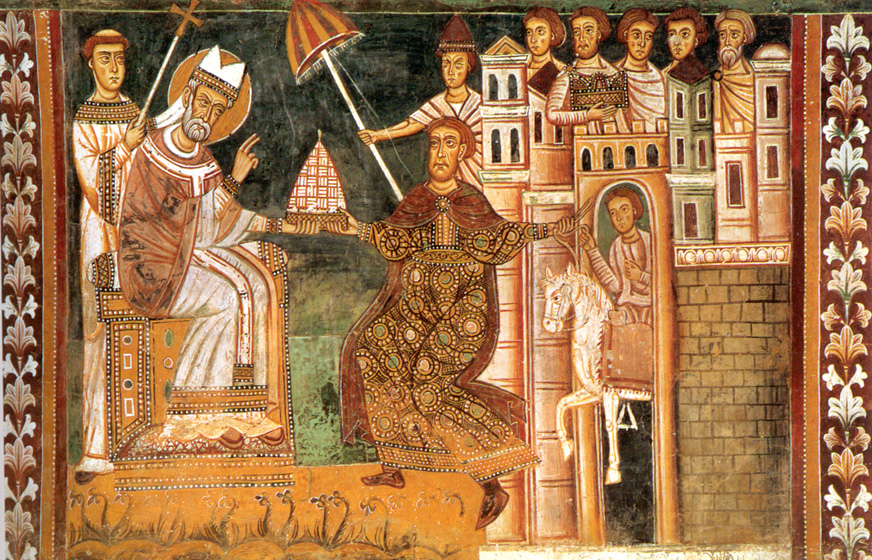DudleySmith
Diamond Member
- Dec 21, 2020
- 20,429
- 14,523
- 2,288
One of the many forgeries used by the corrupt banker run Popes in the 11th-12th centuries to claim political power for themselves over western Europe during and after 'The Great Schism'.

 en.wikipedia.org
en.wikipedia.org
"The Donation of Constantine (Latin: Donatio Constantini) is a forged Roman imperial decree by which the 4th-century emperor Constantine the Great supposedly transferred authority over Rome and the western part of the Roman Empire to the Pope. Composed probably in the 8th century, it was used, especially in the 13th century, in support of claims of political authority by the papacy.[1]
In many of the existing manuscripts (handwritten copies of the document), including the oldest one, the document bears the title Constitutum domini Constantini imperatoris.[2] The Donation of Constantine was included in the 9th-century Pseudo-Isidorean decretals. Lorenzo Valla, an Italian Catholic priest and Renaissance humanist, is credited with first exposing the forgery with solid philological arguments in 1439–1440,[3] although the document's authenticity had been repeatedly contested since 1001.[1]"

Donation of Constantine - Wikipedia
"The Donation of Constantine (Latin: Donatio Constantini) is a forged Roman imperial decree by which the 4th-century emperor Constantine the Great supposedly transferred authority over Rome and the western part of the Roman Empire to the Pope. Composed probably in the 8th century, it was used, especially in the 13th century, in support of claims of political authority by the papacy.[1]
In many of the existing manuscripts (handwritten copies of the document), including the oldest one, the document bears the title Constitutum domini Constantini imperatoris.[2] The Donation of Constantine was included in the 9th-century Pseudo-Isidorean decretals. Lorenzo Valla, an Italian Catholic priest and Renaissance humanist, is credited with first exposing the forgery with solid philological arguments in 1439–1440,[3] although the document's authenticity had been repeatedly contested since 1001.[1]"
